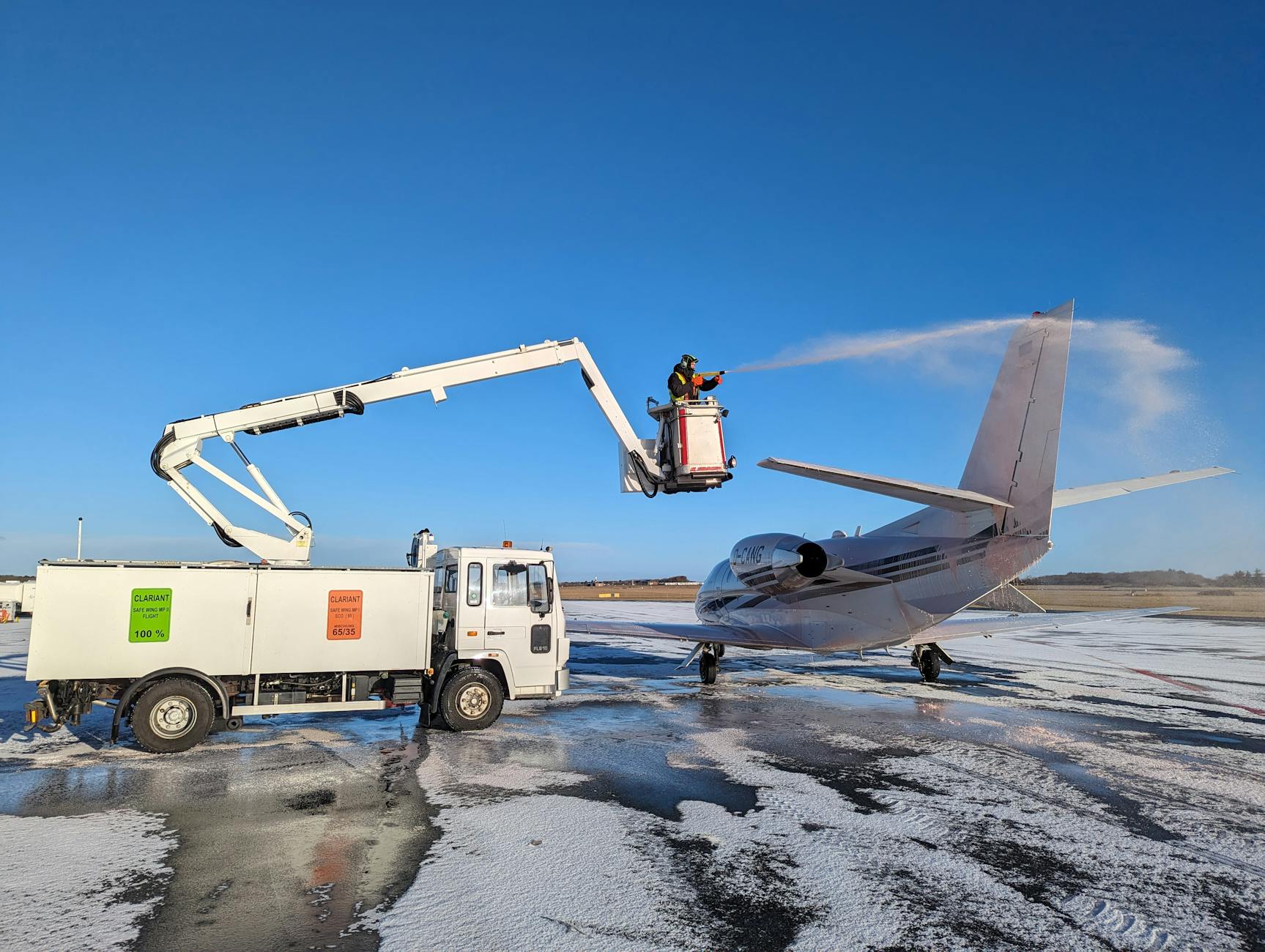Flying private means more control and flexibility, but even the best jets meet their match with certain weather conditions. Rain, wind, and storms all play a part in shaping flight plans and timing. Pilots respond to these challenges with detailed planning and steady nerves, always focusing on passenger safety and comfort.
Understanding how weather affects your flight helps you see the hidden effort behind each trip. The team’s job doesn’t stop when you step on board—skilled pilots and support crew track every change, working to handle delays and smooth out turbulence. Knowing how professionals deal with weather lets you appreciate the extra layer of care that comes with a private jet charter experience.
The Most Common Weather Challenges for Private Jets
Weather shapes every aspect of a private jet flight, from departure to landing. Smaller jets often feel these weather changes more than large airliners, making precise planning and quick thinking essential. Let’s look at some of the most common weather obstacles private jet pilots face and how they work around them to keep each journey safe and smooth.
Thunderstorms and Severe Weather Systems
Thunderstorms are one of the biggest threats to private jet operations. Their rapidly changing conditions can bring lightning, hail, and unpredictable turbulence. Flight crews often monitor storms from hours before departure to well into the flight. When it comes to storms, pilots don’t take chances—avoidance is the rule, not the exception.
The risks that thunderstorms pose include:
- Lightning: A direct strike is rare, but not impossible. Sensitive electronics could be compromised, causing navigational or communication failures.
- Hail: Can seriously damage an aircraft’s fuselage or engines in seconds.
- Turbulence: Sudden, violent shifts in air movement can make even the most seasoned flyers uneasy.
- Microbursts and downdrafts: Fast-moving, downward streams of air can threaten a plane during takeoff or landing.
Private jets, with their lighter build and lower cruising altitude compared to commercial airliners, can experience sharper jolts and more dramatic course corrections when faced with stormy skies. That’s why pilots often reroute or hold flights on the ground until storms have passed over travel corridors.
Turbulence and High Winds
Turbulence isn’t just about bumps—it’s about safety and comfort, especially on private jets which are generally lighter and more responsive than big airliners.

Strong winds can lead to several flight challenges:
- Wind shear: A sudden change in wind speed or direction that can cause unexpected altitude loss near the ground—especially risky during takeoff and landing.
- Crosswinds: Winds blowing perpendicular to the runway make for tricky landings, requiring skillful piloting to keep the approach steady.
- Clear air turbulence: Occurs without visible warning, such as clouds, making it difficult to predict and avoid.
While turbulence rarely causes harm, it can disrupt comfort and, in rare cases, safety. Pilots use advanced weather radar and flight path planning, and often work closely with dispatch and traffic control to find the smoothest possible air. For more insight into how turbulence affects private flights, see Private Jet Turbulence: Everything You Need to Know.
Icing and Snow Conditions
Icing is a major concern for any aircraft, but private jets are especially sensitive due to their size and performance profiles. When freezing rain or heavy snow hits, ice can build up on wings, tails, or sensors, impacting lift, stability, and system accuracy.
Common hazards from icing and snow:
- Ice buildup: Increases weight and drag, while decreasing lift, making takeoff and landing dangerous.
- Frozen control surfaces: Hinders pilot control, especially at low speeds.
- Obscured sensors and vision: Can cause critical flight data errors or limit visibility.
Ground delays for deicing are common in winter. Pilots follow standard protocols, such as applying anti-icing fluids or using on-board deicing systems, before and during flight to keep surfaces clear. In severe cases, private jets may need to wait on the ground or reroute to safer airports. For passengers, this means occasional delays, but always in the interest of safety first.
If you’re interested in learning how customized planning and flexible scheduling play a role during winter operations, check out how empty leg flights help operators manage shifting weather windows.
How Pilots Prepare for and Respond to Weather Challenges
Weather can change everything about a flight, from how long it takes to whether you’ll experience turbulence. Private jet pilots are trained to face these changes head-on, using a mix of technology, teamwork, and personal skill. Their actions start long before the engines roar to life and continue throughout the journey, keeping passengers safe and in the loop every step of the way.
Advanced Weather Monitoring and Flight Planning

Before a private jet leaves the ground, the captain and crew are already reviewing every weather detail. They check live radar, satellite images, and forecast models using powerful flight planning tools. With services like Sun Air Jets, advanced software compiles this real-time data, helping pilots compare hundreds of possible routes in seconds.
Pilots work closely with dispatchers who track weather on a national and global scale. This teamwork makes it possible to avoid threats like thunderstorms, turbulence, and icing before takeoff. The planning process involves:
- Analyzing Current Conditions: Pilots look at radar, satellite, and meteorological reports along the planned path.
- Predictive Forecasting: They use flight planning programs that calculate storm movement, wind shifts, and temperature drops.
- Selecting Alternate Airports: Backups are always considered, especially if bad weather is expected at the destination.
Experienced crews also account for seasonal patterns, known trouble spots, and unique client requests. Modern jets, like those in the Sun Air Jets fleet, offer onboard weather radar and digital mapping displays, giving pilots the power to adapt fast. For more details about how leading operators use the latest tools, see how safety management systems support private charters.
In-Flight Decision Making and Passenger Communication
Once in the air, pilots don’t simply play a waiting game with the weather. They constantly monitor updates from air traffic control, onboard radar, and cockpit data links. When conditions shift — such as turbulence, storm build-up, or strong headwinds — pilots can:
- Change altitude to find smoother air.
- Reroute the plane to avoid storms or turbulence ahead.
- Request priority landings or divert to alternate airports.
Good communication isn’t just for the flight deck. Pilots keep passengers up to date on what’s happening and why, especially if rough patches or delays are possible. A calm explanation — like why the jet needs to change course or fly lower — helps everyone on board relax. Passengers know their team is always looking out for comfort and safety, no matter what the sky throws at them.
Effective communication also strengthens trust in charter operators. The highest standards of service demand not only skilled flying, but also open and honest updates from the crew. For more on what makes private jet service stand out, visit what to expect from a private jet charter.
For those curious about how pilots hone these decision-making skills and what goes into real-time weather calls, check out this resource from the FAA about aviation weather decision-making for a behind-the-scenes look.
Passenger Experience: How Weather Affects Your Trip
When you book a private jet, comfort and timing are at the top of your list. But even with all the perks of private flying, weather can influence how your trip goes. From the moment you arrive at the terminal to the time you step out at your destination, weather plays a part in your overall experience. Knowing what’s possible helps set the right expectations—and lets you see all the ways your crew works to keep you comfortable and informed.

What Passengers Can Expect Before Takeoff
When the forecast looks challenging, your experience often starts with updates from your charter team. They’ll reach out early if there’s a risk of delay—sometimes before you’ve even packed your bags. Here’s what you might notice:
- Clear Communication: Crew will keep you posted on potential weather delays and discuss options, like moving your trip later or switching airports if needed.
- Flexible Scheduling: With private jets, you won’t be stuck on a rigid timetable. While delays are still possible, the team works to get you in the air as soon as it’s safe and comfortable.
- Pre-Flight Comfort: Should you have to wait, luxury lounges make delays easier to manage. You can relax, work, or enjoy refreshments until your aircraft is ready.
Before departure, the crew also puts safety first by giving the jet a full check. They may request extra deicing, inspect for wind conditions, and review all systems related to passenger comfort. All of this happens behind the scenes so your journey starts off smooth.
Experience During the Flight: Comfort, Adjustments, and Arrival
Once in the air, weather can still play a role in your experience. Pilots have to make smart, sometimes quick, decisions to keep everything as relaxed as possible for you. What might this look like?
- Smoother Rides: Pilots aim to avoid turbulence using weather radar and reports from other flights. If needed, they change altitude for a smoother ride.
- Transparency: If a bumpy patch is ahead, your pilot will often let you know in advance, giving you time to get comfortable and secure loose items.
- Luxury on Board: Private jets offer more tailored amenities—snacks, drinks, climate control, and entertainment—making any delay or change far more pleasant.
In rare cases, your crew may need to divert the flight to a different airport if landing conditions aren’t safe. If this happens, you’ll be supported every step of the way, with ground arrangements arranged quickly to keep your plans on track.
To dive deeper into the standards that keep you comfortable and protected no matter the weather, review Sun Air Jets’ private jet safety and operational standards.
The Balance of Safety and Luxury
The true difference of a top private jet service shows when weather interrupts your plans. Sun Air Jets quietly fuses safety measures with high-end comfort, so even a stormy forecast won’t leave you stranded or uncomfortable. From transparent updates to smoothly arranged alternatives, your journey reflects a blend of operational excellence and luxury. Every step centers on you—your time, your well-being, and your peace of mind.
With experience, quick thinking, and a commitment to great service, the whole team works together to turn unpredictable skies into a seamless travel experience.
Why Private Jets Offer Greater Flexibility During Inclement Weather
When storms threaten your travel plans, private jets stand out for their ability to adapt fast. Travelers who pick private aviation quickly learn how much more control and comfort they have—even when weather tries to get in the way. Flexible schedules, access to airports off the commercial grid, and the power to personalize every part of the journey combine to minimize disruptions that typically slow down airline passengers.

Access to a Wider Range of Airports
One of the biggest perks of private jets, especially in bad weather, is the ability to use thousands of airports that airlines can’t. If a storm grounds flights at a major hub, private jets can often reroute to a nearby smaller airport that’s still open and safe.
Advantages of this airport versatility include:
- Skipping crowded airline terminals during delays or closures.
- Shorter driving times on arrival, since you can land closer to your true destination.
- Easier last-minute changes thanks to fewer restrictions and less congestion.
With more places to land, pilots find alternatives fast—often without a significant detour. This is especially helpful when winter weather or storms make popular hubs unusable.
Curious which airports you can access privately that airlines skip? Explore more about private jet airports and destinations to see just how many options you really have.
Flexible Departure Times
Rigid airline schedules put you at the mercy of changing weather, but private jets let you adjust your plans as needed. Operators will move your departure time to dodge incoming storms or delay just long enough for safe passage.
- If a snow shower hits during your window, you might leave before or after to miss the worst of it.
- Rather than getting stuck with a canceled flight, the crew will shift your trip to an available slot as soon as conditions allow.
This flexibility is a lifesaver during unpredictable seasons. It also means your day isn’t dictated by a single departure time and you avoid the stress of racing to an airport only to wait for hours. For a deeper understanding of how charter operators manage schedules, check out the benefits of on-demand private jet charters.
Personalized Service and Proactive Support
When the weather turns rough, a personal touch goes a long way. Private jet crews offer swift updates, suggest the best reroute options, and look after your needs from start to finish.
Here’s what sets private travel apart during weather delays:
- A dedicated team monitors your trip in real time, adjusting plans for your safety and convenience.
- Ground transport and connections are updated on the fly, so you’re never left stranded.
- Your unique preferences shape every aspect—whether it’s providing a specific in-flight meal or arranging transport from a new airport.
This attention helps smooth out last-minute changes that weather often forces on commercial flights. If you want details about how tailored service can transform your travel experience, visit the page on what to expect from a private jet charter.
The Private Advantage in Weather-Related Disruptions
In the end, greater airport access, flexible schedules, and hands-on support give private jets a strong edge when storms hit. These features help keep you moving while others are stuck waiting. By choosing private, you gain a travel experience that adjusts to you, every step of the way—rain or shine.
For more perspective on how private aviation responds to diverse weather challenges, resources like NBAA’s article on winter operations for business aviation offer useful insights from industry leaders.
Conclusion
Every flight managed by skilled private jet pilots reflects their focus on safety and their talent for minimizing weather disruptions. With up-to-the-minute updates, smart planning, and a steady approach, they protect your comfort from takeoff to landing. You can feel confident that choosing private aviation means expert support even when conditions shift unexpectedly.
Rely on trusted operators like Sun Air Jets for your next trip—where adaptability comes standard and every detail reflects a commitment to smooth, secure service. Discover how their approach to private jet charter safety continues to set the bar for a reliable travel experience, no matter what the forecast brings.


No comments for “How Weather Impacts Private Jet Flights and How Pilots Keep You Safe”